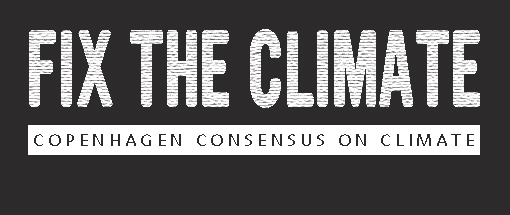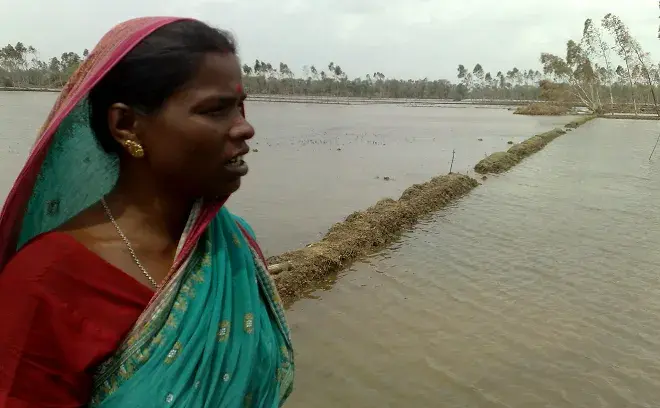Lakshmi Bera, India
One week after Cyclone Aila flattened Lakshmi Bera's mud, bamboo and thatched grass house in May, a Copenhagen Consensus researcher found her family of five under the open sky. Their only protection was a plastic tarp.
"We have been living on a bowl of rice for the past few days", said 35-year-old Lakshmi Bera. "The food that we had stocked up was lost. Whatever water we are getting we are sharing with our cattle, since the animals too are suffering. The only clothes we have left are the ones we are wearing."
After the cyclone ravaged parts of India and Bangladesh, a Greenpeace spokesperson announced that the disaster should be used to teach politicians a lesson. "India must continue to pressure the industrialized world to make deep and urgent cuts in greenhouse gas emissions."
Greenpeace was following a script. In 2005, Sierra Club Executive Director Carl Pope told members of his organization they should "[r]ide the wave of public concern created over extreme weather."
In Gangapur village in the Sundarbans, India, Lakshmi had more immediate fears than carbon. "If we don't have a house, food and water, how can we think about these things?" she asked.
Lakshmi needed 25,000 Indian rupees to rebuild and dreamed of being able to afford a concrete house that would not wash away. She wanted the Indian government to improve the mud embankments—last substantially worked on in the 1970s—that were supposed to protect her home.
She also was angry that the early-warning system failed. "Had we known the storm would come," she said, "we could have at least moved some of our belongings elsewhere."
While it is impossible to link a single weather event to global warming, scientists warn that tropical storms like Cyclone Aila could become more severe. The global cost of climate-related disaster has increased relentlessly over the past half-century. The cause is not global warming, however. Rather it is rising concentrations of people and infrastructure along coastlines.
Roger A. Pielke Jr. noted in a 2005 paper for Environmental Science and Policy that if everything else stays the same but we halt global warming, there would still be a 500% increase in hurricane damage in 50 years time. If global warming continues but we halt the number of people moving into harms' way, the increase in hurricane damage would be less than 10%. If the entire world had signed up to the Kyoto Protocol, and its binding restrictions were to last all the way until 2050, the predicted reduction in global warming could cut hurricane damage by half a percentage point.
By following the advice of hurricane victims like Lakshmi, however, we could achieve a lot more. Better evacuation plans, community education, and the distribution of relief would reduce the amount of suffering caused by severe storms.
Regulating vulnerable land and not offering state-subsidized, low-cost insurance that encourages people to settle in high-risk areas would reduce the number of people hit by hurricanes. Better building codes, upgraded dikes and levees, and improved warning systems would also reduce storm damage. Protecting wetlands and beaches that act as natural seawalls would also help.
These measures are much cheaper than carbon cuts and could dramatically cut the losses due to storm damage that are sure to come. They would also save a huge amount of heartache and suffering—and at lower cost.
Rather than riding a wave of concern about big storms, we would do better to follow the advice of those, who like Lakshmi, have to live with the consequences of our actions.
Researcher: Devjyot Ghoshal


